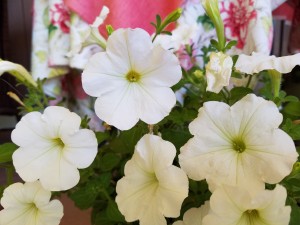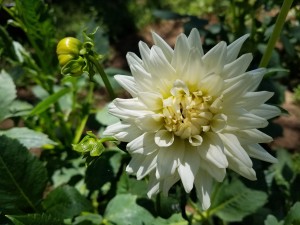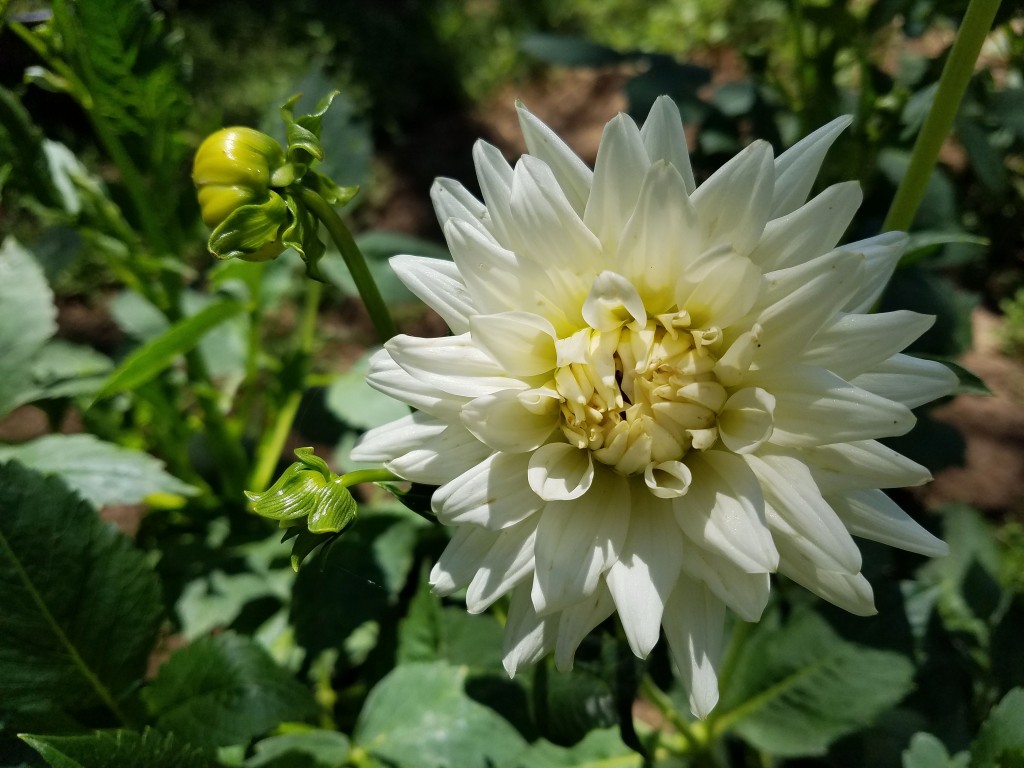New gardeners often ask me how it’s possible that the flowers, vegetables, fruit, and herbs grown here at our farm are 100% organic. Most people ask because they are interested in how they can avoid synthetic chemicals in their own gardens.

Does this mean that every single one of our plants always grows and produces perfectly? Honestly no; that’s an unrealistic goal for any garden. In fact, I don’t know any garden that performs perfectly organic or not, do you?
If you just got a mental image of Meryl Streep’s (impossibly) stunning vegetable patch in the movie “It’s Complicated,” then you might want to sit down for this. Every one of those plants in that garden were pampered and protected inside a greenhouse for months until they were tucked into the flawlessly coiffed soil of the studio set. Even the tomatoes were wired onto the vines climbing the trellis.
Don’t be fooled.
Of course, it’s entirely possible to have a gorgeous and robust garden come the middle of summer. Still every photographer angles the camera so that the wilted or chewed leaves aren’t captured in the photo. Every year, there is something that falls short of our expectations in one way or another. But the truth is that most of our plants grow and produce well…often incredibly so!
To prepare for a beautiful and productive organic garden we:
- Create Fertile Soil — Healthy plants are better equipped to withstand the battle against pests and disease. Nutritionally rich, loamy soil is the best thing that you can offer them, so be generous with organic matter and add as much of it as you can in between seasons (plantings).
- Make Smart Plant Choices — We choose most of our plant species and varieties that have been proven grow well in our region, as plants that love their environment tend to thrive. There’s no point in planting something that has a hard time surviving in your zone and then becoming discouraged when it does just about as well as predicted (poorly). That’s about as basic as it gets.
- Install Proper Irrigation — When possible install an irrigation system that delivers water directly to the root zone and avoids the leaves and blossoms. If you keep watering overhead, there are plenty of foliage diseases are just waiting to show up and ruin your day (or year).
- Make Compost — You already know that one can never have “too much” compost hanging around. You need a lot — and even more after that. You might have to purchase compost in the beginning, but plan on getting it for free after that. Designate a place in your yard for a compost pile, then gather organic materials and produce some soil magic.
- Use Organic Fertilizers — Fertilizing is simply feeding the soil so that the plant roots can take the nutrients up into the plant. There are many natural fertilizer choices available such as blood meal, alfalfa meal, fish meal, worm castings, and composted manures (herbivore) for nitrogen; bone meal and rock phosphate for phosphorus; and kelp meal and greensand for potassium.
- Cover Bare Ground — Best gardening advice ever, “cover up all bare soil.” Soil that doesn’t see the light of day holds moisture longer and blocks weed seeds from getting any sun. Use whatever works best for your particular garden bed. Bark mulch, living groundcover, landscape fabric, layered newspaper, cardboard, or straw are all appropriate for covering up bare earth.
- Use Good Timing — Timing is everything. I’m pretty sure I’ve heard that somewhere before, but it’s most certainly true for gardening. Planting at the right time for your growing zone will avoid a whole lot of heartache. Feeding at regular intervals will yield your biggest crop harvest ever, and weeding (or preventing) weeds from day one will save your plants and your back.
- Grow Plants for Beneficial Insects — We always grow some goodies especially for the beneficial insects. The insects that are on the gardener’s side are those that either pollinate flowers or those that will go into battle with the bad guys in the name of our gardens. Lacewings, bees, butterflies, ladybugs, hover flies, praying manits’, etc are all your insect friends.

Protecting the health of people, animals, plants, and the environment is our top priority, so we work hard to utilize all of the techniques above to give us the edge to a favorable outcome.

